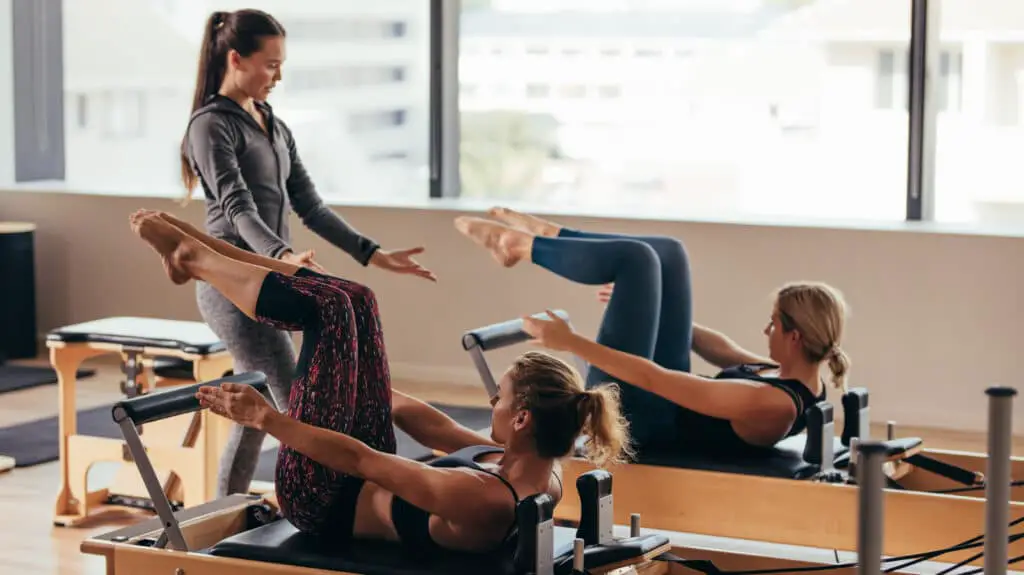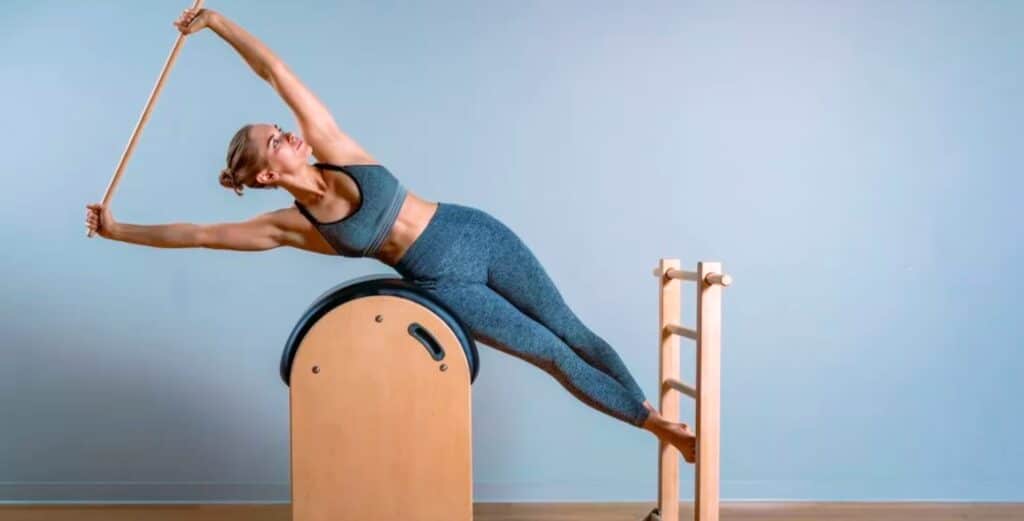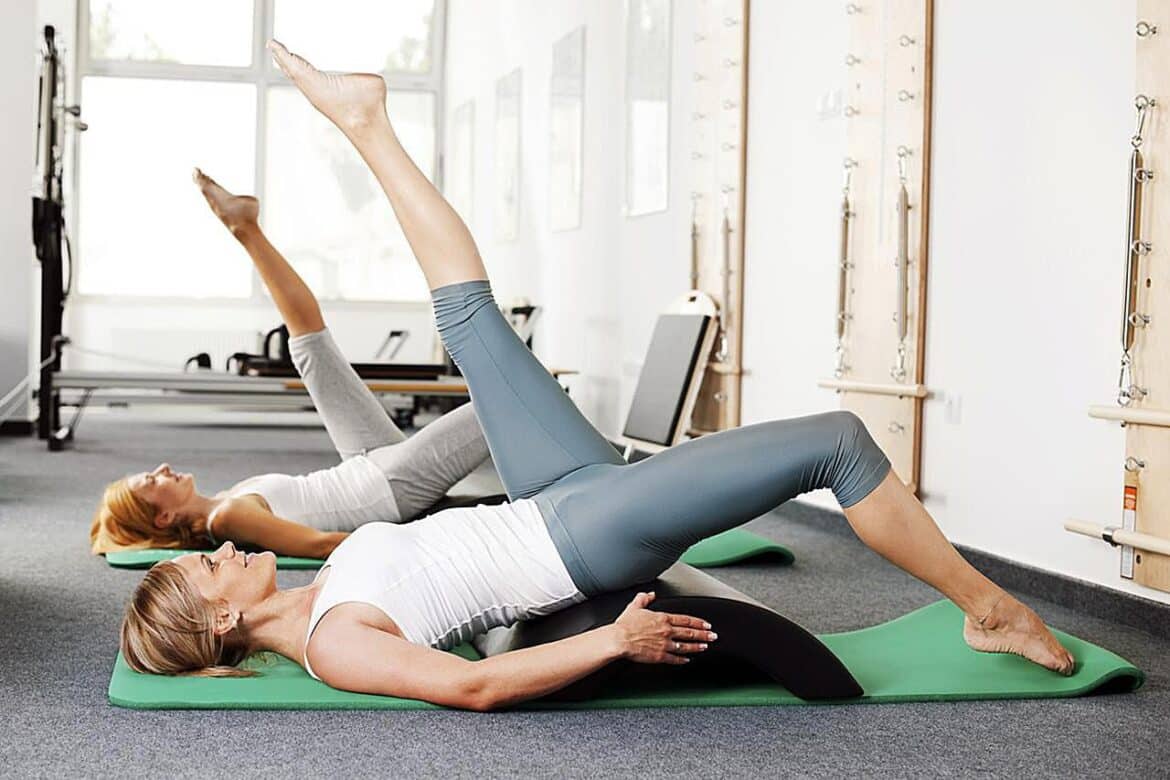Introduction
Is It Bad To Do Pilates Everyday: To address this query effectively, it’s essential to understand both the benefits and potential drawbacks of daily Pilates practice. First and foremost, Pilates offers an array of advantages. It promotes improved posture, enhanced flexibility, and increased core strength, which can alleviate back pain and contribute to better overall stability. Additionally, Pilates fosters mindfulness, encouraging individuals to connect with their bodies, reduce stress, and enhance body awareness. Given these benefits, it’s tempting to think that practicing Pilates daily might be ideal.
Moderation and individualization are key when considering daily Pilates workouts. For beginners or those unaccustomed to regular physical activity, diving headfirst into daily sessions might lead to overexertion, muscle strain, or injury. Even seasoned practitioners can risk burnout or plateauing in their progress if they don’t allow their bodies time to recover and adapt.
The suitability of daily Pilates depends on various factors, including one’s fitness level, goals, and the intensity and duration of each session. While some individuals may thrive on daily practice, others may find that three to five times a week is more manageable and sustainable. It’s crucial to listen to your body, acknowledging signs of fatigue or discomfort, and allowing for adequate rest and recovery.

What happens if I do Pilates everyday?
One of the best things about doing Pilates every day is that you’ll quickly start to see improvements in your form. This is due to the fact that you’ll become more familiar with the correct way to do each exercise, and your body will start to automatically follow these movements. You’ll avoid injuries.
Improved Core Strength: Pilates is renowned for its ability to strengthen the core muscles, including the abdominal muscles, lower back, and pelvic floor. Regular practice can lead to a stronger and more stable core, which can contribute to better posture and reduced risk of back pain.
Enhanced Flexibility: Pilates involves a range of stretching exercises that can improve flexibility in various muscle groups. Daily practice can lead to increased range of motion, making it easier to perform everyday activities and reduce the risk of injury.
Better Posture: Pilates emphasizes body awareness and alignment. Consistent practice can help you develop better posture habits, which can alleviate discomfort associated with poor posture and enhance your overall appearance.
Stress Reduction: Like many forms of exercise, Pilates can be an excellent stress reliever. Daily sessions can help you relax, clear your mind, and reduce stress levels, promoting mental and emotional well-being.
Improved Balance and Coordination: Pilates exercises often involve controlled movements that challenge your balance and coordination. Regular practice can lead to improved balance skills, which can be beneficial for daily activities and sports.
How many times a week should I do Pilates?
3-5 times per week
So, how many times a week should you do Pilates? To reap the best benefits, you’ll want to do it 3-5 times per week. However, you may not want to do it every day of the week because your muscles need time to recover.
Schedule and Consistency:Your availability and schedule play a significant role in determining how often you can practice Pilates. Consistency is key, so choose a frequency that aligns with your lifestyle and commitments.
Variety and Cross-Training:Consider incorporating a variety of workouts into your routine. Pilates can be an excellent complement to other forms of exercise, such as cardio, strength training, or yoga. This approach can provide a well-rounded fitness regimen.
Recovery Days:It’s essential to allow your body to rest and recover. Even if you love Pilates, scheduling rest days is crucial to prevent overuse injuries and maintain long-term fitness.
Professional Guidance:If you’re unsure about the optimal frequency for your specific goals, consider consulting a certified Pilates instructor or fitness professional. They can provide personalized recommendations based on your needs and abilities.
Can you do Pilates 7 days a week?
Though you can do Pilates every day, this may be difficult if you have a busy schedule. Plus, doing any type of exercise daily may increase your risk of boredom while also potentially increasing your risk of overtraining. If you decide to do Pilates every day, be sure to keep your workouts balanced and varied.
Variety and Overtraining: Doing the same exercises every day may lead to overtraining and an increased risk of injury. It’s crucial to vary your Pilates routine to prevent overuse of specific muscle groups.
Recovery: The body needs time to recover and repair itself. Without adequate rest, you may experience fatigue, muscle soreness, or even burnout. Incorporate rest days into your weekly routine.
Professional Guidance: If you’re considering daily Pilates practice, consult with a certified Pilates instructor or fitness professional. They can create a well-balanced program that accounts for your fitness level, goals, and recovery needs.
Listen to Your Body: Pay close attention to how your body responds to daily Pilates. If you experience persistent fatigue, soreness, or discomfort, it may be a sign that you need more rest days.
Diversify Your Routine: To avoid overuse injuries and keep your workouts interesting, incorporate different types of Pilates (e.g., mat, reformer, and Cadillac) and other forms of exercise into your weekly schedule.
Is Pilates 5 days a week too much?
But while you will see benefits from doing Pilates once or twice weekly, exercise experts agree that the ideal is three times a week. That’s the “sweet spot,” said Ms. Samper.
Overtraining Risk: Exercising too frequently without adequate rest can lead to overtraining, which may result in fatigue, muscle soreness, decreased performance, and an increased risk of injury.
Listen to Your Body: Pay attention to how your body responds to five days of Pilates. If you experience persistent fatigue, soreness, or discomfort, it’s crucial to adjust your routine and incorporate rest days.
Balanced Workouts: Ensure that your Pilates routine includes a variety of exercises that target different muscle groups. Overemphasizing specific movements can lead to overuse injuries.
Professional Guidance: Consult with a certified Pilates instructor or fitness professional to design a well-rounded program tailored to your fitness level, goals, and recovery needs.
Rest and Recovery: Incorporate rest days into your weekly routine to allow your body time to rest and repair. Active recovery activities, such as walking or gentle stretching, can be beneficial on these days.
What are the side effects of Pilates?
Subjects in both pilates groups were informed about side effects such as shortness of breath, dizziness, headache, muscle pain, and weakness.
Muscle Soreness
Cause: Pilates engages muscles that may not be regularly used in everyday activities. When you start Pilates or increase the intensity, you may experience muscle soreness.
Prevention/Management: Gradually increase the intensity of your Pilates sessions, stay hydrated, and consider incorporating restorative exercises or stretching to reduce soreness.
Overuse Injuries
Cause: Repeating specific movements excessively without proper rest can lead to overuse injuries, such as tendinitis or strain.
Prevention/Management: Ensure you have a well-rounded Pilates routine that includes exercises targeting different muscle groups. Incorporate rest days into your schedule to allow for recovery.
Joint Discomfort
Cause: Incorrect form or pushing beyond your current ability can lead to joint discomfort, especially in the shoulders, knees, or hips.
Prevention/Management: Focus on proper form, avoid hyperextension of joints, and modify exercises as needed. Seek guidance from a qualified Pilates instructor.
Why am I not seeing results from Pilates?
One of the main reasons you may not be feeling or seeing the results of your Pilates workouts is your consistency, or lack thereof. While you may be getting some benefits from yo-yoing from 5 classes one week, to a two week break, you’ll find far greater results from building a solid foundation from the get go.
Inconsistent Practice
Issue: One of the primary reasons people don’t see results is inconsistent practice. Pilates, like any exercise, requires regularity for meaningful changes to occur.
Solution: Commit to a consistent practice schedule that aligns with your goals and lifestyle. Consistency is key to achieving results.
Lack of Intensity or Challenge
Issue: If you’re consistently performing Pilates at a low intensity or avoiding more challenging exercises, your progress may stagnate.
Solution: Gradually increase the intensity of your Pilates sessions by incorporating more advanced exercises and progressing your workouts. Challenge yourself within safe limits.
Improper Form
Issue: Poor technique and incorrect form can hinder your progress and potentially lead to injury.
Solution: Seek guidance from a certified Pilates instructor who can correct your form and provide personalized feedback. Pay close attention to alignment during your sessions.
Is it OK to do Pilates 3 days in a row?
Is it like weight training in that you need to rest your muscles for 48 hours between workouts? Pilates is safe enough to do every day. Initially you may want to do it every day so you get a rhythm and become consistent; then a good goal is to do it every other day.
Variety in Workouts: To prevent overuse injuries and maintain balance, ensure that your Pilates routine includes a variety of exercises that target different muscle groups.
Proper Recovery: Incorporate rest days or active recovery activities into your weekly routine to allow your body time to rest and repair. These days can help prevent burnout and overtraining.
Hydration and Nutrition: Proper hydration and nutrition are crucial for recovery and performance. Stay adequately fueled and hydrated before, during, and after your Pilates sessions.
Listen to Your Body: Pay close attention to how your body responds to three days of Pilates. If you experience persistent fatigue, soreness, or discomfort, it’s crucial to adjust your routine and incorporate rest as needed.
Professional Guidance: Consulting with a certified Pilates instructor or fitness professional can help you design a well-rounded and balanced program that takes into account your fitness level, goals, and recovery needs.
How quickly can Pilates change your body?
A simple answer is that physical results from Pilates will be visible within 3 to 6 weeks, but that depends on how frequently you exercise. Psychological improvements will be noticeable much quicker, with most people feeling more energized, refreshed, and jollier after their Pilates sessions.
Consistency: The most significant factor in seeing changes is how consistently you practice Pilates. Regular practice is key to achieving results. Generally, practicing 2-3 times a week can lead to gradual improvements over time.
Intensity and Duration: The intensity and duration of your Pilates sessions matter. More challenging and longer workouts may yield quicker results, but it’s essential to balance intensity with your fitness level to avoid overexertion or injury.
Initial Fitness Level: Your starting point plays a significant role. Those who are less active or new to exercise may notice changes more quickly initially because the body adapts faster to new stimuli.
Diet and Nutrition: Proper nutrition supports any fitness program. A balanced diet can help accelerate results, particularly in terms of body composition changes.
Specific Goals: The speed of change also depends on your specific goals. If your aim is to improve flexibility, you might see results sooner than someone focusing on muscle building or weight loss.

Conclusion
For those who are experienced and conditioned, daily Pilates sessions can offer numerous benefits. Improved core strength, flexibility, posture, and enhanced body awareness can become part of a healthy daily routine. However, it’s essential to maintain balance and listen to your body. Overdoing it, even with a low-impact exercise like Pilates, can lead to fatigue, muscle strain, and potential burnout.
On the other hand, beginners or individuals who are new to regular exercise might find daily Pilates too demanding initially. It’s crucial for them to start slowly, allowing their bodies to adapt and recover between sessions. In such cases, a frequency of three to five times a week may be more appropriate. The key to successful daily Pilates practice lies in individualization and self-awareness. Pay close attention to how your body responds to daily sessions. If you notice signs of overtraining, such as persistent fatigue, soreness, or decreased performance, it’s vital to incorporate rest days or reduce the intensity and duration of your workouts. Moreover, consider your overarching fitness goals. Your goals should the frequency and intensity of your Pilates practice.
Pilates is a versatile and effective exercise method that can be tailored to meet individual needs and preferences. Whether you choose to practice it daily or less frequently, the key is to strike a balance that supports your well-being and long-term fitness journey. By remaining attuned to your body signals and adjusting your practice accordingly, you can harness the numerous benefits of Pilates while minimizing the risk of overtraining or injury. A mindful and balanced approach will enable you to enjoy the many rewards of Pilates, promoting both physical and mental health.

